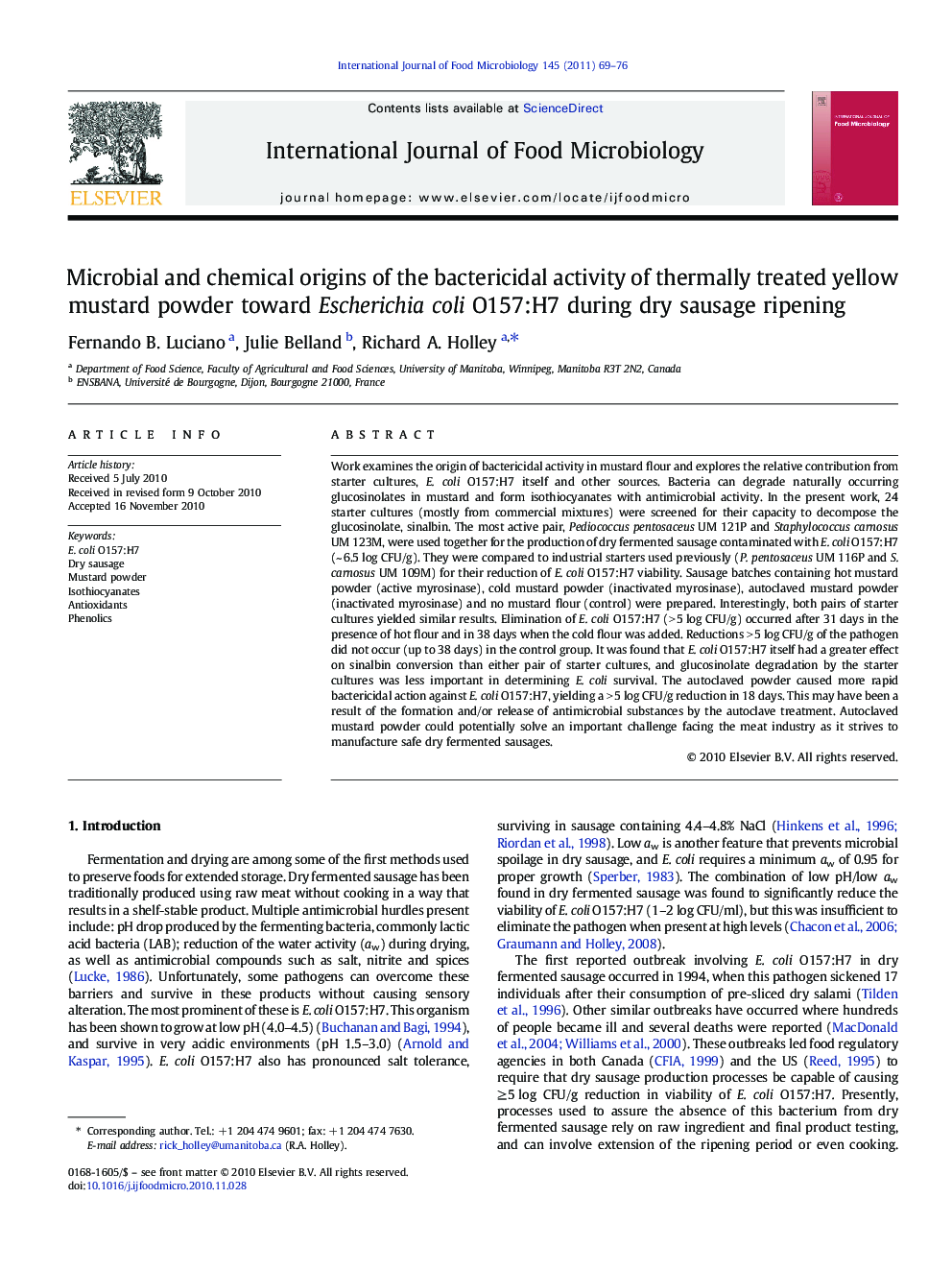| کد مقاله | کد نشریه | سال انتشار | مقاله انگلیسی | نسخه تمام متن |
|---|---|---|---|---|
| 4368726 | 1616674 | 2011 | 8 صفحه PDF | دانلود رایگان |

Work examines the origin of bactericidal activity in mustard flour and explores the relative contribution from starter cultures, E. coli O157:H7 itself and other sources. Bacteria can degrade naturally occurring glucosinolates in mustard and form isothiocyanates with antimicrobial activity. In the present work, 24 starter cultures (mostly from commercial mixtures) were screened for their capacity to decompose the glucosinolate, sinalbin. The most active pair, Pediococcus pentosaceus UM 121P and Staphylococcus carnosus UM 123M, were used together for the production of dry fermented sausage contaminated with E. coli O157:H7 (~ 6.5 log CFU/g). They were compared to industrial starters used previously (P. pentosaceus UM 116P and S. carnosus UM 109M) for their reduction of E. coli O157:H7 viability. Sausage batches containing hot mustard powder (active myrosinase), cold mustard powder (inactivated myrosinase), autoclaved mustard powder (inactivated myrosinase) and no mustard flour (control) were prepared. Interestingly, both pairs of starter cultures yielded similar results. Elimination of E. coli O157:H7 (> 5 log CFU/g) occurred after 31 days in the presence of hot flour and in 38 days when the cold flour was added. Reductions > 5 log CFU/g of the pathogen did not occur (up to 38 days) in the control group. It was found that E. coli O157:H7 itself had a greater effect on sinalbin conversion than either pair of starter cultures, and glucosinolate degradation by the starter cultures was less important in determining E. coli survival. The autoclaved powder caused more rapid bactericidal action against E. coli O157:H7, yielding a > 5 log CFU/g reduction in 18 days. This may have been a result of the formation and/or release of antimicrobial substances by the autoclave treatment. Autoclaved mustard powder could potentially solve an important challenge facing the meat industry as it strives to manufacture safe dry fermented sausages.
Research Highlights
► Meat starter cultures converted the glucosinolate from yellow mustard to form the antimicrobial isothiocyanate, pHBIT.
► Commercial meat starter cultures had different ability to form the isothiocyanate.
► E. coli O157:H7 most effectively formed the lethal isothiocyanate during dry sausage manufacture.
► Thermal treatment (115 °C for 15 min) increased the antimicrobial potency of mustard powder.
► Use of mustard powder as an ingredient during dry sausage production has the potential to control the pathogen.
Journal: International Journal of Food Microbiology - Volume 145, Issue 1, 31 January 2011, Pages 69–76